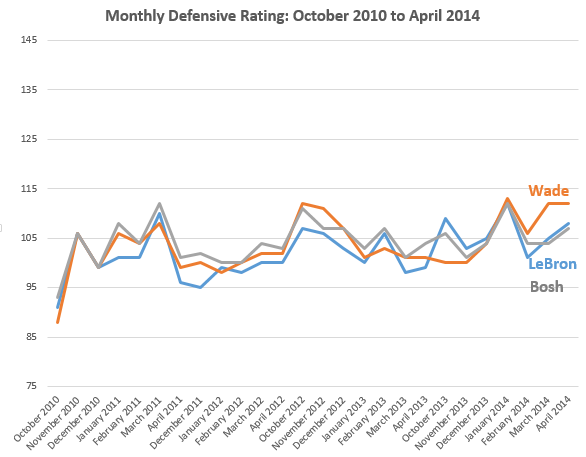I pulled monthly split stats from Basketball-Reference.com on LeBron, Dwade and Bosh going back to the three's first season with the Heat. Below I charted their monthly offensive rating (an estimate of the points produced by a player per 100 possessions) and defensive rating (an estimate of the points allowed by a player per 100 possessions). Because these three are all starters and play the bulk of the Heat's minutes together, you would expect their ratings to mirror each other (the calculations takes into account several team statistics).
Offensively, over the last two years LeBron has really begun to distance himself from the other two. Further, DWade has exhibited a noticeable decline that began March 2013. Defensively, the three stars follow a much closer path, but again DWade appears to struggle recently more so than the LeBron and Bosh (in the bottom chart, as it is preferable to allow fewer points, the lower the line the better). Should LeBron stay in Miami these charts suggest he will be expected to carry an increasing load for the other Big Two as their performance wanes.
Offensively, over the last two years LeBron has really begun to distance himself from the other two. Further, DWade has exhibited a noticeable decline that began March 2013. Defensively, the three stars follow a much closer path, but again DWade appears to struggle recently more so than the LeBron and Bosh (in the bottom chart, as it is preferable to allow fewer points, the lower the line the better). Should LeBron stay in Miami these charts suggest he will be expected to carry an increasing load for the other Big Two as their performance wanes.





